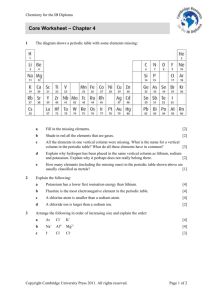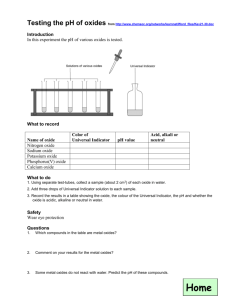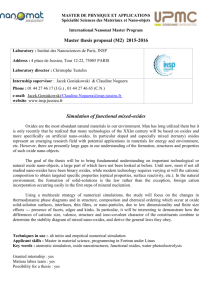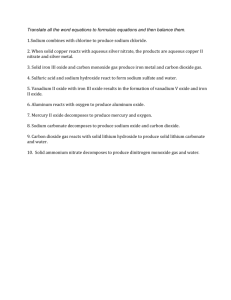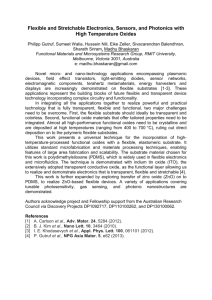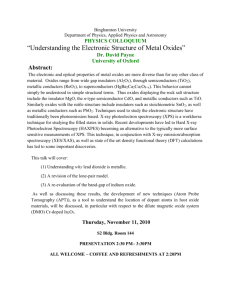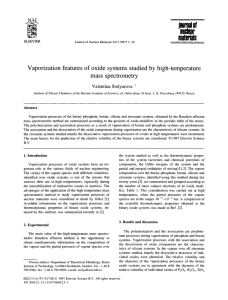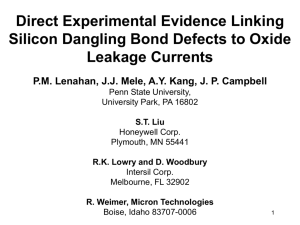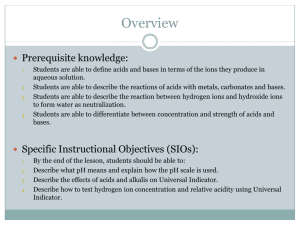File - Riske Science
advertisement
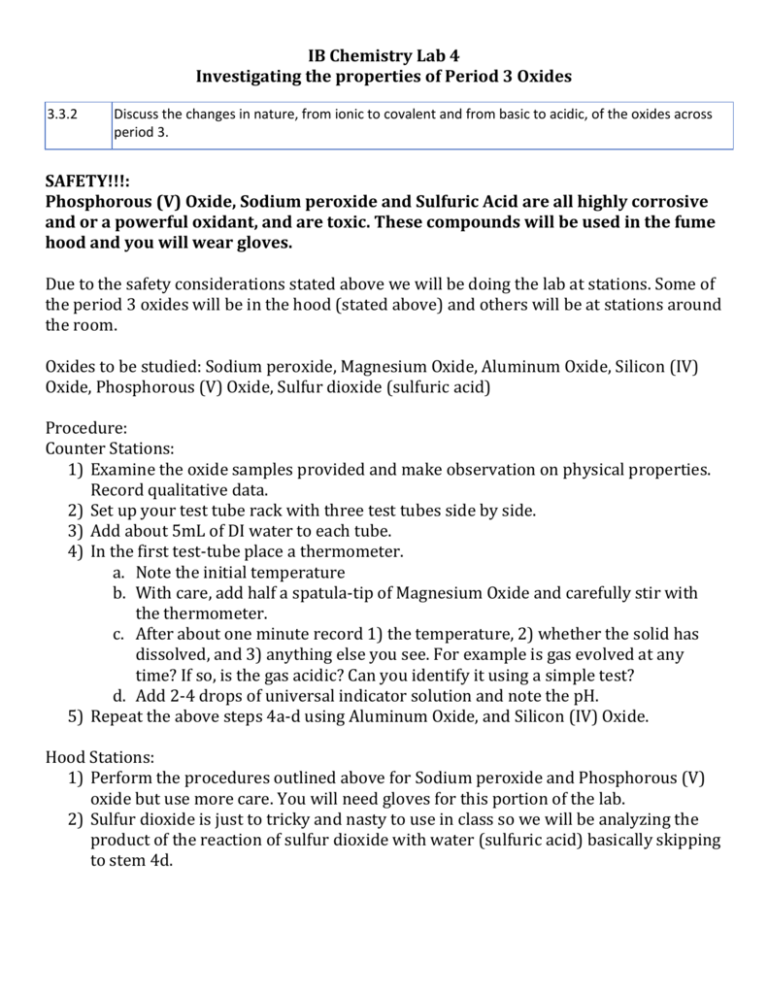
IB Chemistry Lab 4 Investigating the properties of Period 3 Oxides 3.3.2 Discuss the changes in nature, from ionic to covalent and from basic to acidic, of the oxides across period 3. SAFETY!!!: Phosphorous (V) Oxide, Sodium peroxide and Sulfuric Acid are all highly corrosive and or a powerful oxidant, and are toxic. These compounds will be used in the fume hood and you will wear gloves. Due to the safety considerations stated above we will be doing the lab at stations. Some of the period 3 oxides will be in the hood (stated above) and others will be at stations around the room. Oxides to be studied: Sodium peroxide, Magnesium Oxide, Aluminum Oxide, Silicon (IV) Oxide, Phosphorous (V) Oxide, Sulfur dioxide (sulfuric acid) Procedure: Counter Stations: 1) Examine the oxide samples provided and make observation on physical properties. Record qualitative data. 2) Set up your test tube rack with three test tubes side by side. 3) Add about 5mL of DI water to each tube. 4) In the first test-tube place a thermometer. a. Note the initial temperature b. With care, add half a spatula-tip of Magnesium Oxide and carefully stir with the thermometer. c. After about one minute record 1) the temperature, 2) whether the solid has dissolved, and 3) anything else you see. For example is gas evolved at any time? If so, is the gas acidic? Can you identify it using a simple test? d. Add 2-4 drops of universal indicator solution and note the pH. 5) Repeat the above steps 4a-d using Aluminum Oxide, and Silicon (IV) Oxide. Hood Stations: 1) Perform the procedures outlined above for Sodium peroxide and Phosphorous (V) oxide but use more care. You will need gloves for this portion of the lab. 2) Sulfur dioxide is just to tricky and nasty to use in class so we will be analyzing the product of the reaction of sulfur dioxide with water (sulfuric acid) basically skipping to stem 4d. Results Table: Na2O2 Appearance MgO Al2O3 SiO2 P4O10 SO2 gas On mixing with water dissolves Initial Temperature Final Temperature Does it Dissolve? pH of solution Other Observations low high yes Questions: 1) Use your experimental results, your data book, and text/internet in necessary to complete a larger version of the table below. Formula of oxide Na2O2 Melting Point Boiling Point State at STP Action of water pH of Solution Acid Base Nature Conductivity of liquid Solubility in cyclohexane (a non-polar solvent) Structure Bonding MgO Al2O3 SiO2 P4O10 SO2 Cl2O 2) Write equations for any reactions which took place when you added the oxides to water. 3) Comment on the change in structure and bonding in the oxides between sodium and chlorine. 4) How does the acid-base nature of the oxide of the elements in Period 3 change with increasing atomic number? 5) Can you relate this change to the change in structure and bonding that takes place along the period?

